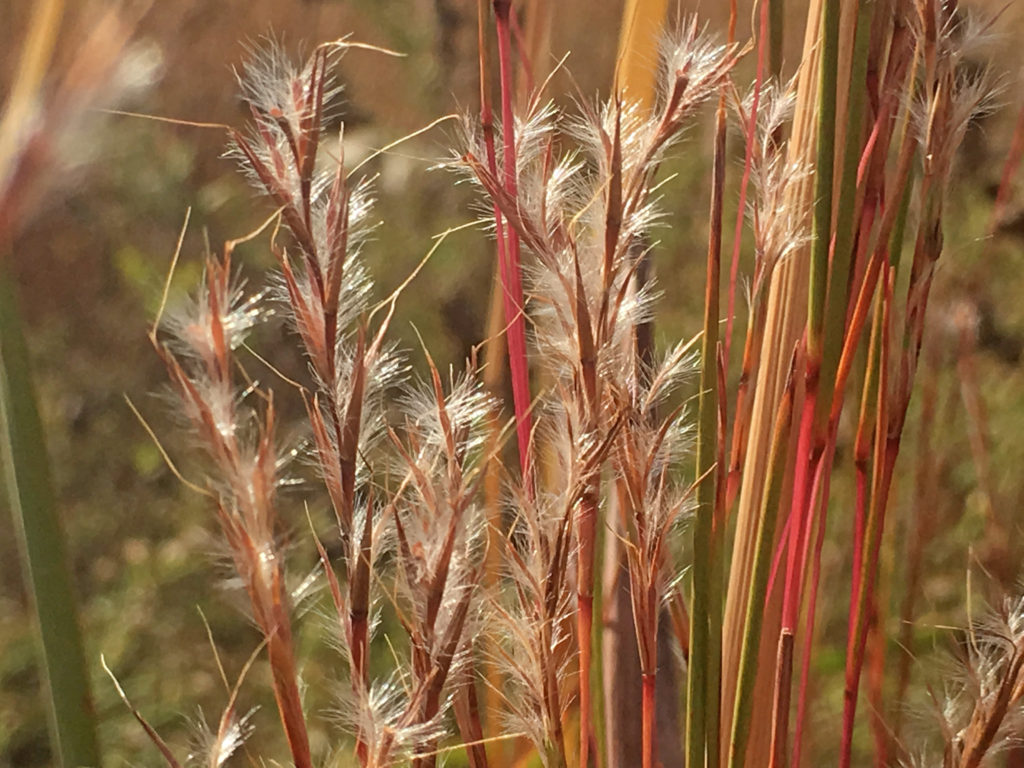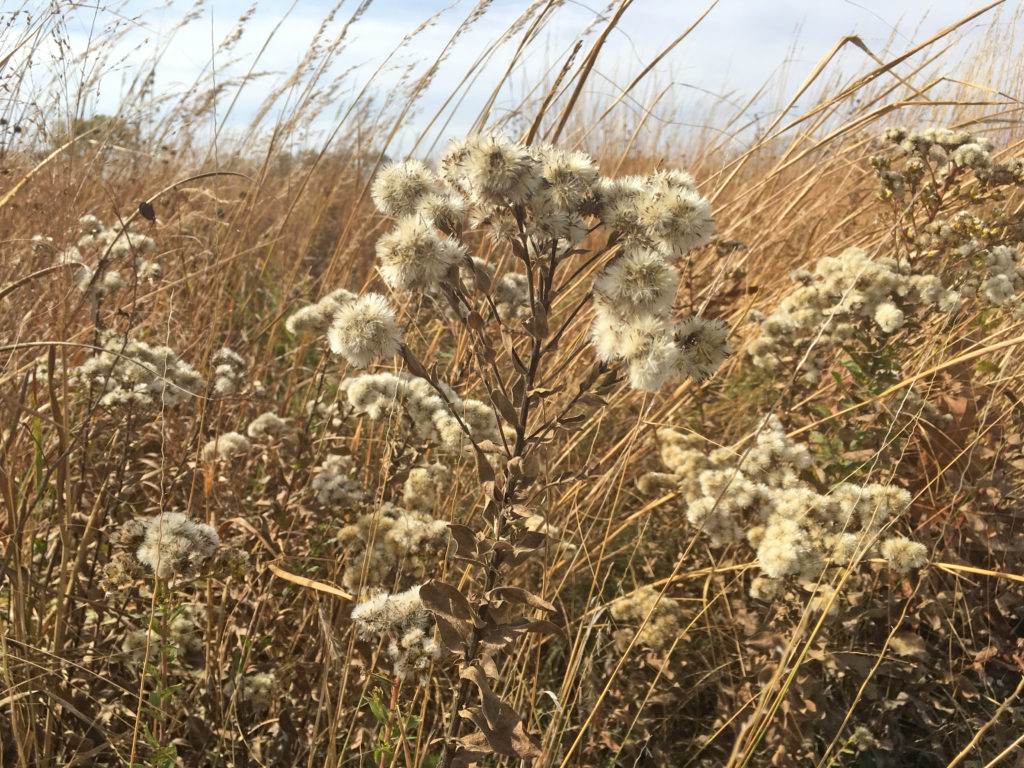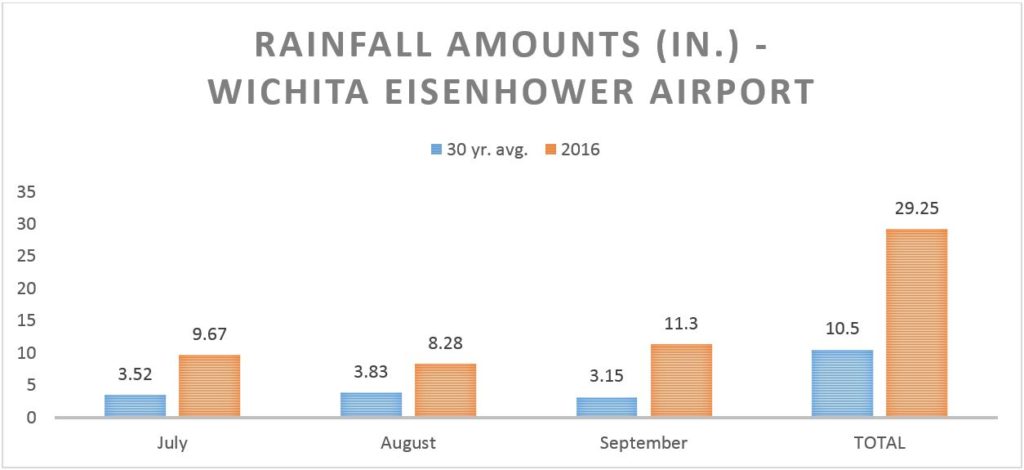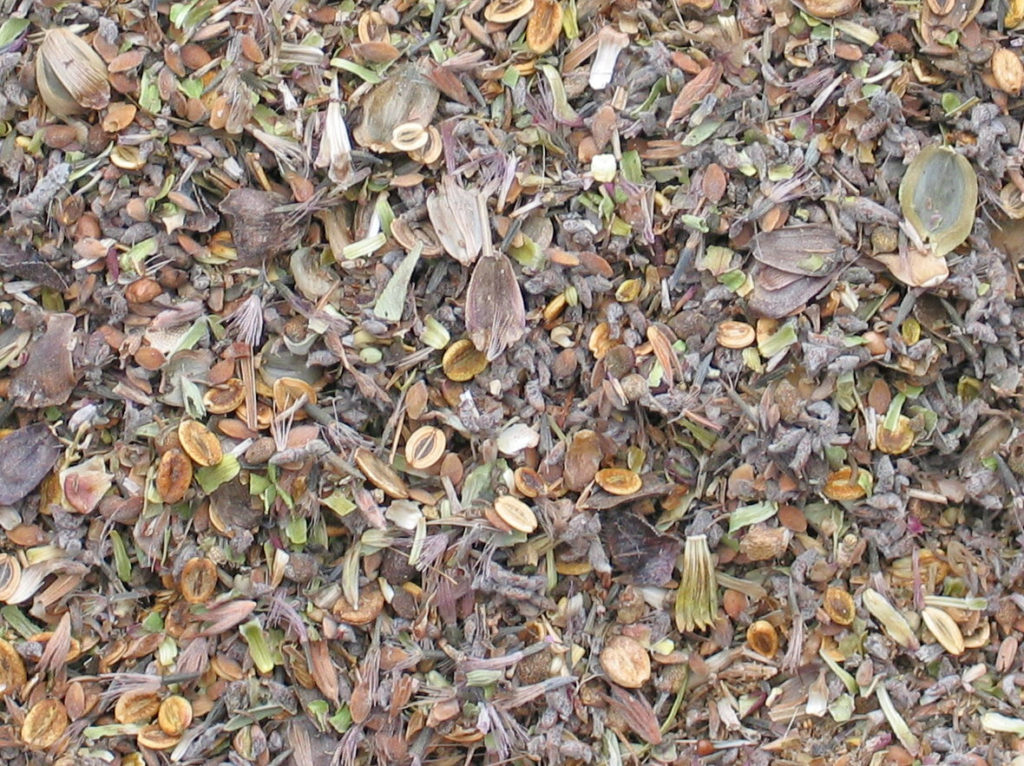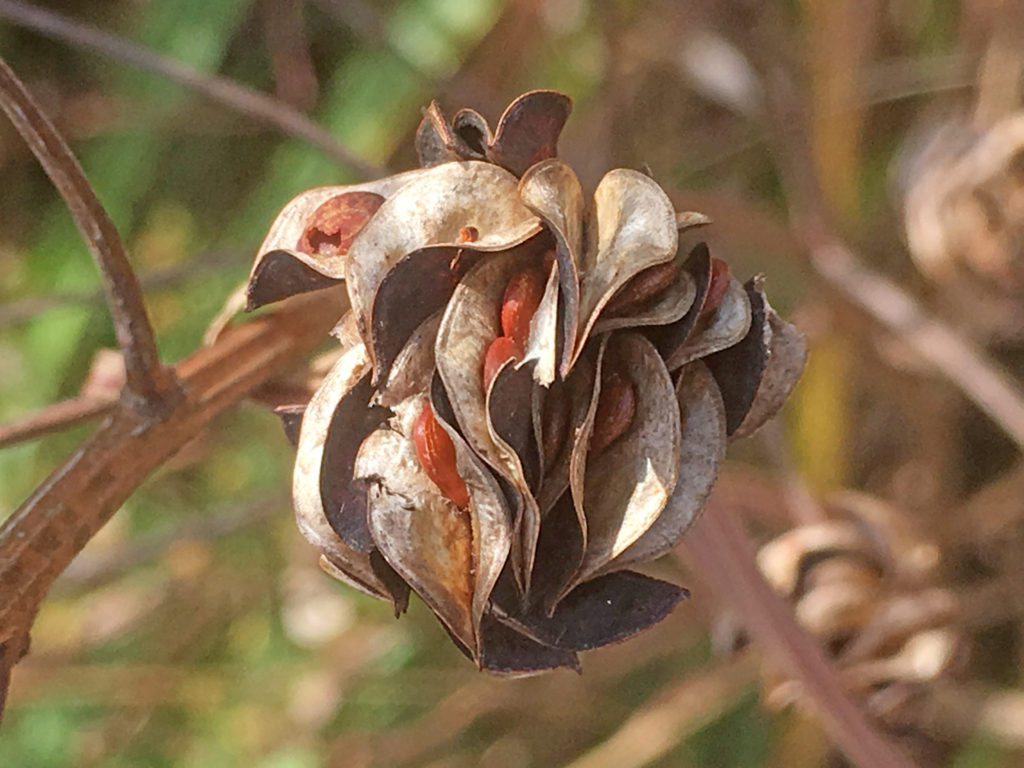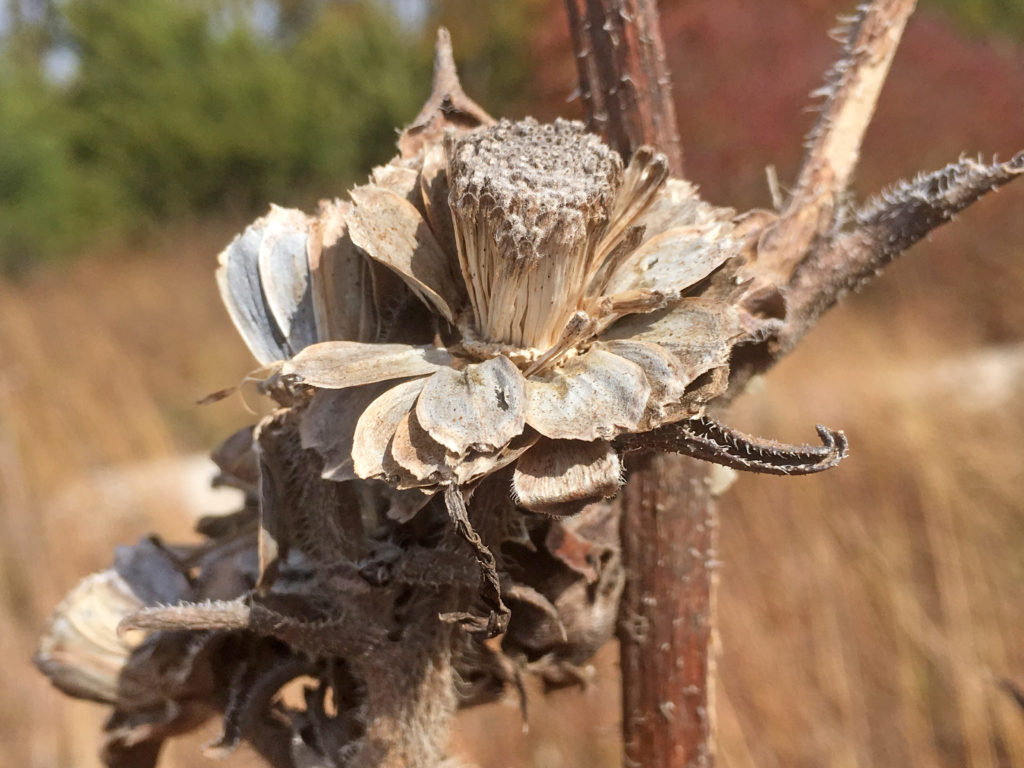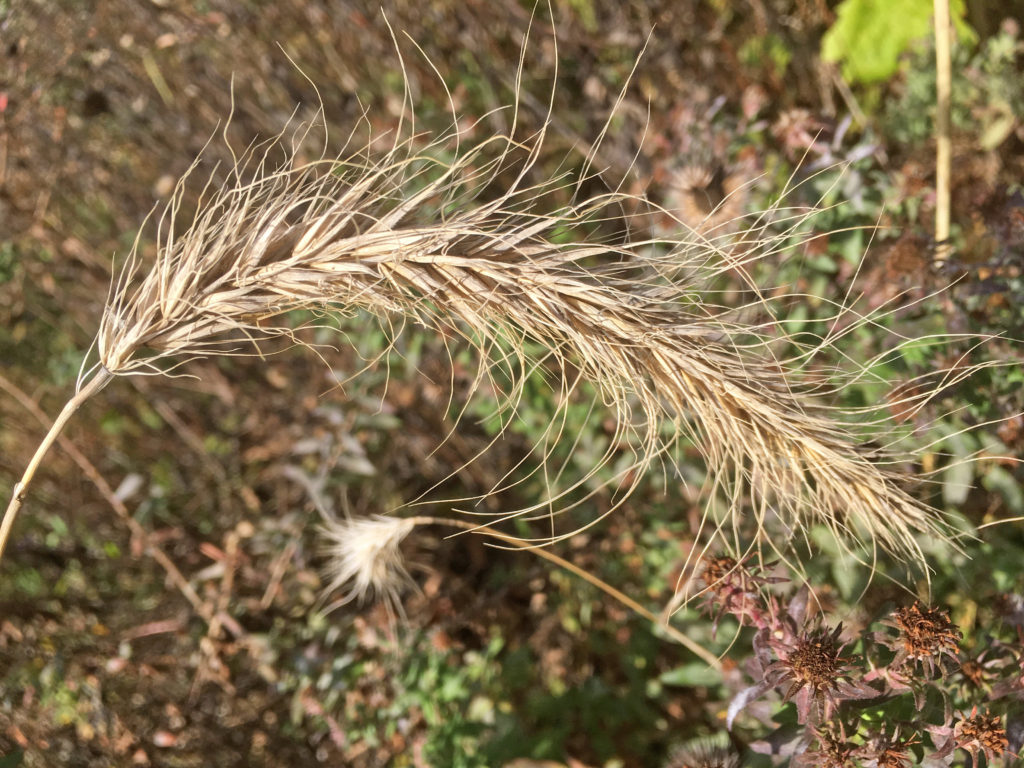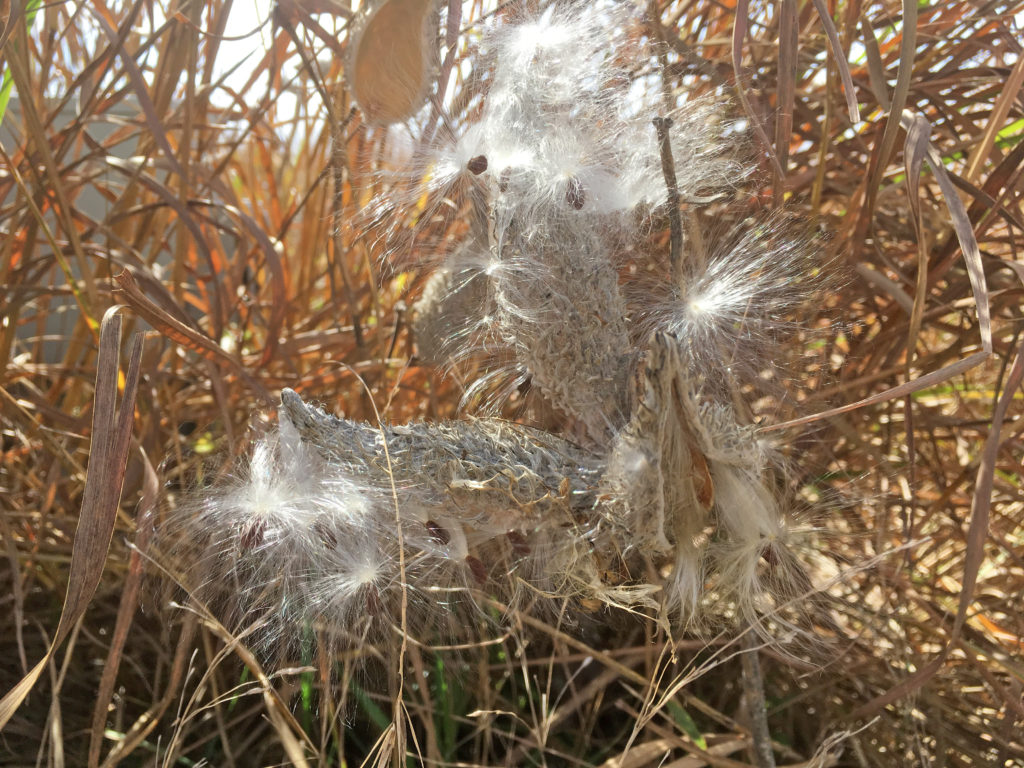The words “seeds for the future” are easy to use in abstract terms when talking about carrying out Harold and Evie Dyck’s long-term vision for an arboretum (35 years old and counting), or doing education activities with K-12 kids through our Earth Partnership for Schools Program. I use this phrase all the time.
But right now, I want to use those words in the literal sense.
It has been a bountiful year for seed production in South Central Kansas. Oaks have had a mast year. Native shrubs are laden with fruits. Prairie wildflowers and grasses are full with ripe seeds. Seed production helps these plants have a future presence.
The ecological food web starts with plants as the producers. When this base plant layer of energy is healthy and diverse, the rest of the food web of wildlife it supports is more robust. Seeds are an important part of this food web. Insects are abundant this year. Birds, small mammals, amphibians, and reptiles are finding plenty of food as well. The following chart of rainfall totals from this summer (generated from Weather Underground data) shows why our native Kansas vegetation was so productive.
Starting from Seed
A big focus of my first seven years at Dyck Arboretum was to reconstruct 12 acres of diverse prairie from seed as part of our Prairie Window Project. This process involved finding local remnant prairies, documenting their plant species, collecting and cataloging seed from April through November, cleaning seed, designing seed mixes, and planting. Developing this project engaged legions of volunteers, expanded our reputation as a prairie conservation resource, and diversified our educational outreach. We collected and planted a lot of seed during those years both mechanically and by hand. The resulting prairie is maturing nicely.
I often tout landscaping with native plants because of their year-round interest. They do offer aesthetically pleasing flowers during the growing season that appeal to the average gardener. But their interesting seed heads, dormant season vegetation, and myriad of changing colors and textures also provide habitat and landscaping value for wildlife and people through the fall and winter.
A year of abundant seed production helps a prairie build up its soil seed bank. This is especially important on a site like this one with a seed bank dominated by annuals and non-native species from decades of agricultural use. Enhancing the abundance of prairie seeds in that seed bank will help add resiliency to this prairie in future years when drought or disturbance occur.
Seed Collection
I enjoy collecting seed. Walking a prairie with a rhythmic movement of hand to bag is therapeutic. I have never been a farmer, but, in a way, this process connects me to the harvest rituals of my ancestors who made their living in agriculture.
Time spent collecting prairie seed over the years and developing a mental image for certain targeted plants at different times of the year have helped me recognize many species in seed form almost easier than when they are in bloom.
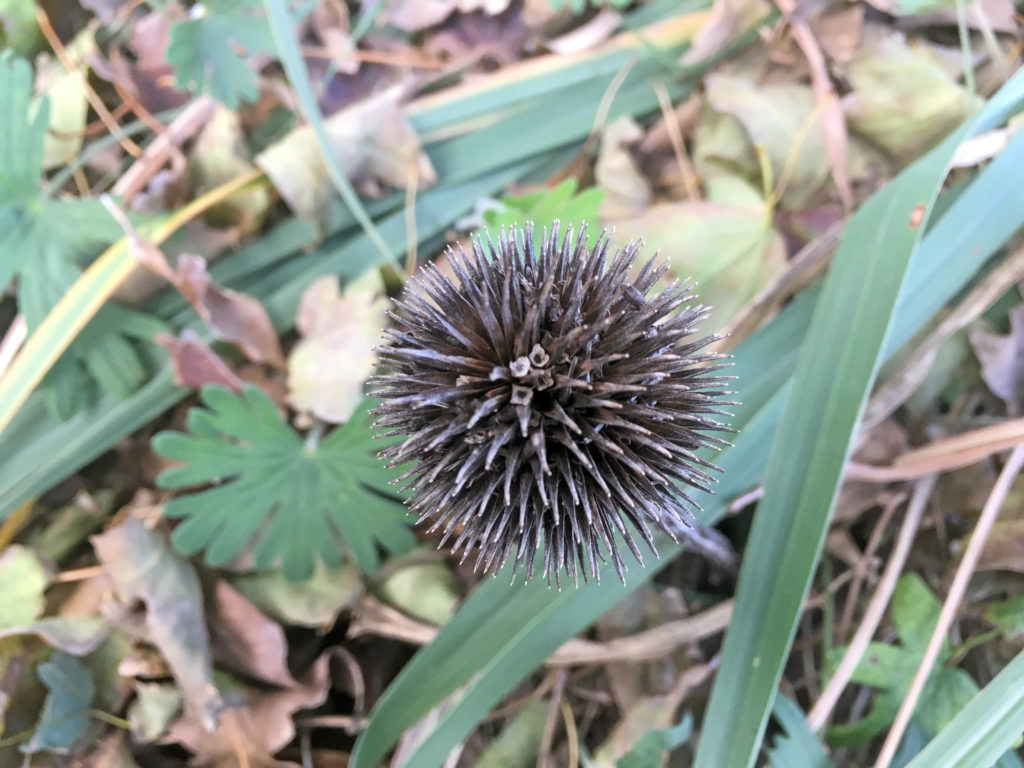
Some plants like purple conflower (Echinacea angustifolia) may even have more value to us in seed form. Echinacea seeds (three visible in middle of seed head) and roots have medicinal value as a pain killer and immune system booster. Chewing on a few seeds has a temporary numbing effect on your teeth and tongue.

Seeds of native tall thistle (Cirsium altissimum) are held tightly now, but will loosen and fall away this winter.
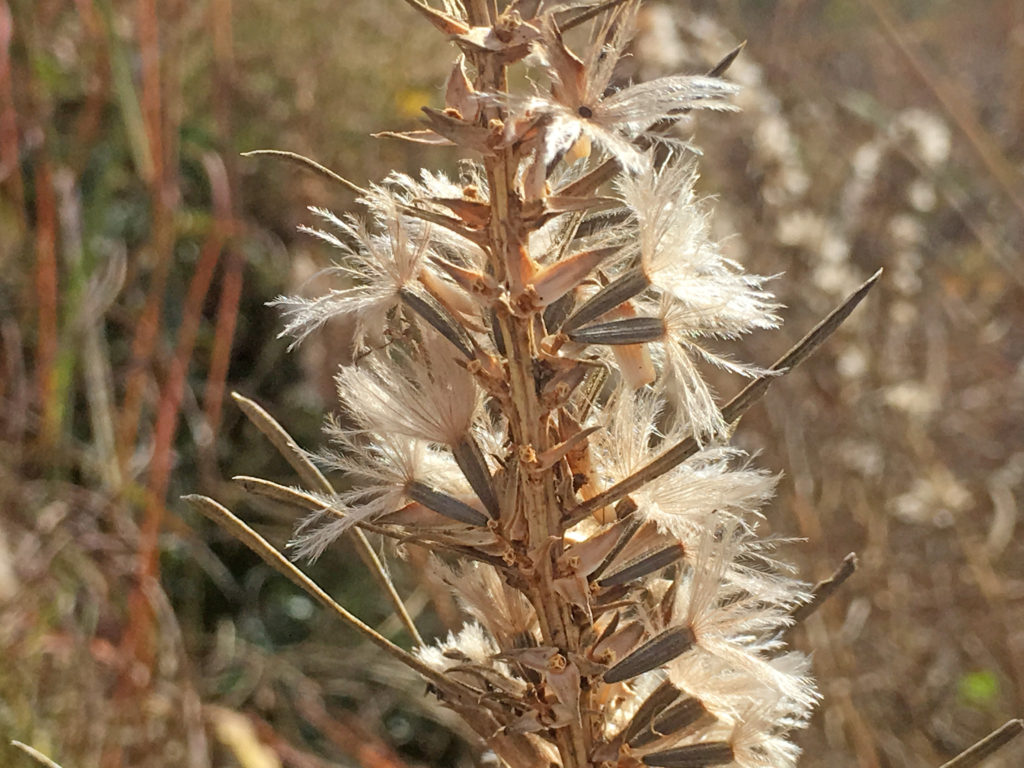
With a parachute-like pappus, Dotted gayfeather (Liatris punctata) seeds are ready for a breezy liftoff.
Evolution of Seed Dispersal
Plants evolve with all kinds of seed dispersal mechanisms. Woodland plants develop tasty fruits around their seeds, spring-loaded propellers, and Velcro-like hooks and barbs that latch onto fur. Plants of the open prairie sometimes employ these kinds of mechanisms, but most simply take advantage of the abundant wind by growing hairs/wings that allow them to take flight. By scattering their seeds to other locations, plants help insure their presence in the future.
May you find more enjoyment in the dormant vegetation and seeds persisting around you this fall and winter.

